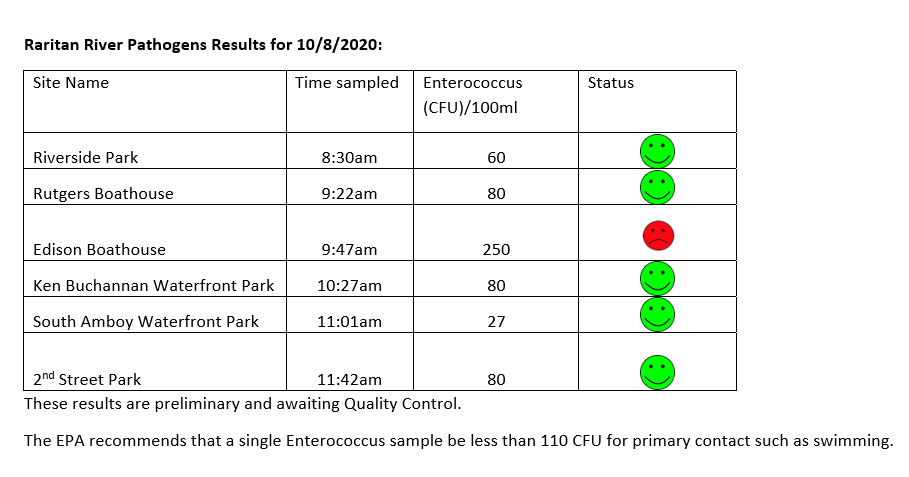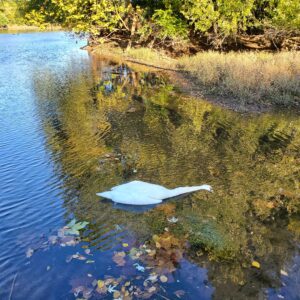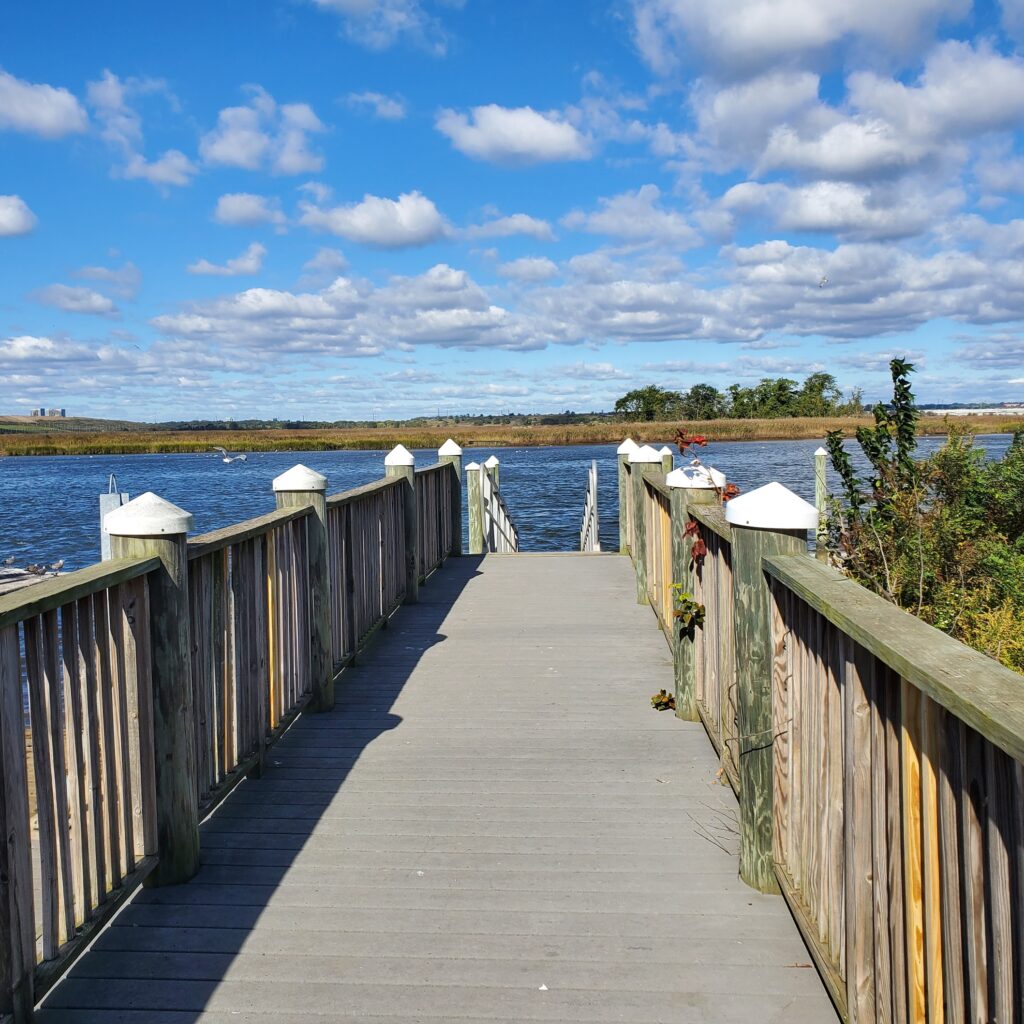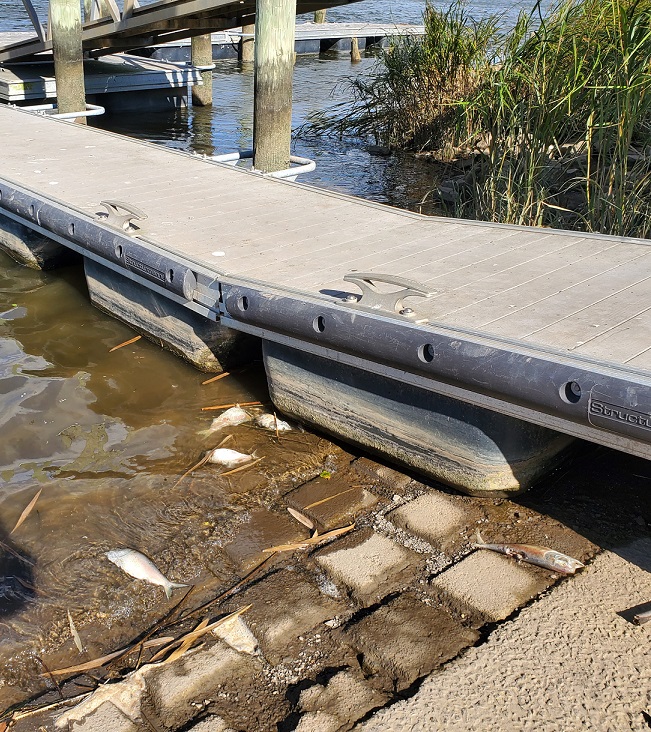Lower Raritan pathogens results for 10.8.2020
Photos and article by LRWP Board President Heather Fenyk
The LRWP and Rutgers Cooperative Extension of Middlesex County monitor for Fecal Coliform and Enterococcus at six non-swimming public beach access sites along the Lower Raritan during the warmer summer months. Fecal Coliform and Enterococcus are indicators of disease-causing bacteria in our waterways.
The EPA recommends that a single Enterococcus sample be less than 110 Colony Forming Units (CFU)/100mL for primary contact. Enterococci levels are used as indicators of the possible presence of disease-causing bacteria in recreational waters. Such pathogens may pose health risks to people fishing and swimming in a water body. Sources of bacteria include Combined Sewer Overflows (CSOs), improperly functioning wastewater treatment plants, stormwater runoff, leaking septic systems, animal carcasses, and runoff from manure storage areas. Enterococci levels are often high after heavy or consistent rainfall.
Below are our pathogens results for October 8, 2020. These are some of the best results of the season so far!
Please note: results are preliminary and pending quality control.

Field notes for 10.8.2020
Every Thursday morning for the past 10 weeks of monitoring we have been greeted by a pair of mute swans at our Piscatway Riverside Park monitoring site. Although Mute Swans are not native to our area, and their aggressive behavior and voracious appetites disturb local ecosystems and displace native species, they are known to mate for life and these two seemed to have a special bond. It was a sad sight to find one of the pair floating along the dock this morning, it’s partner just a few yards away.

Things didn’t get much better, with fish kills at our Edison and Sayreville sites. The gorgeous view off one of the Ken Buchanan docks belied the mess in the water.


